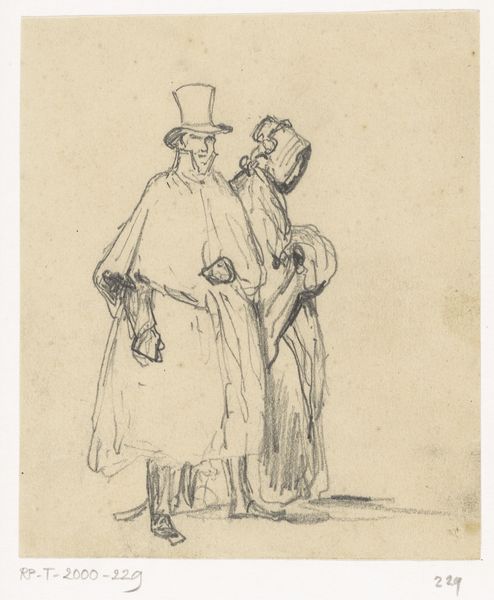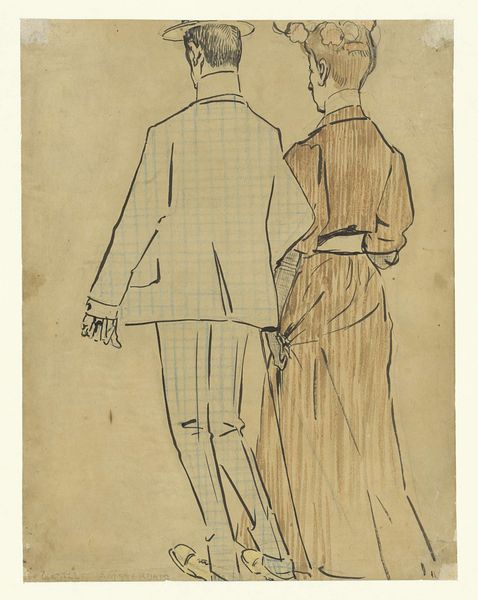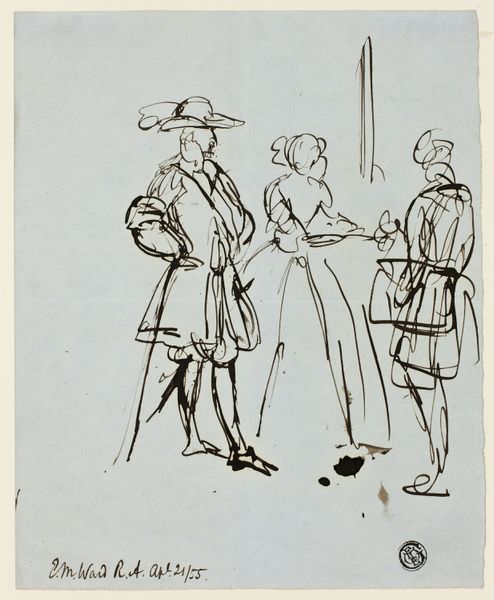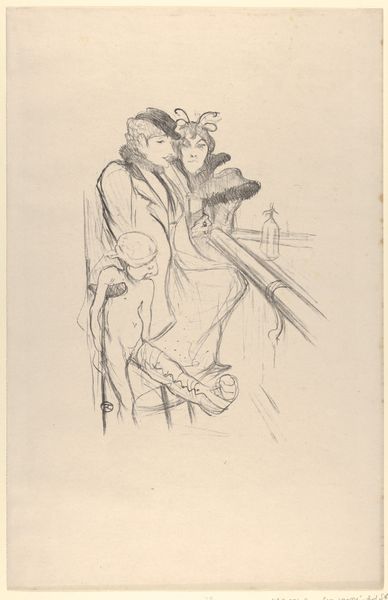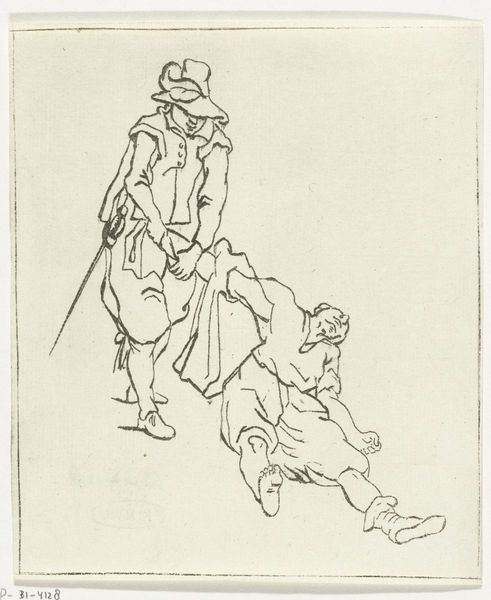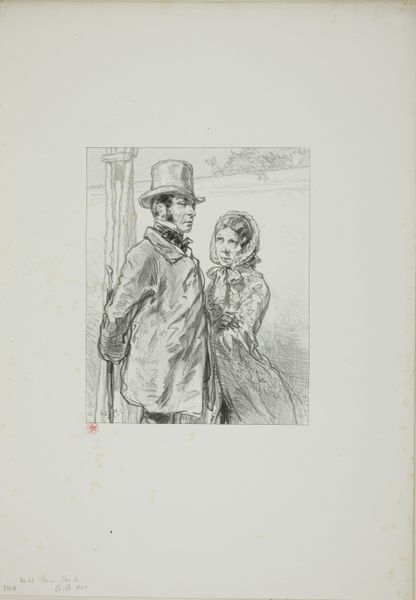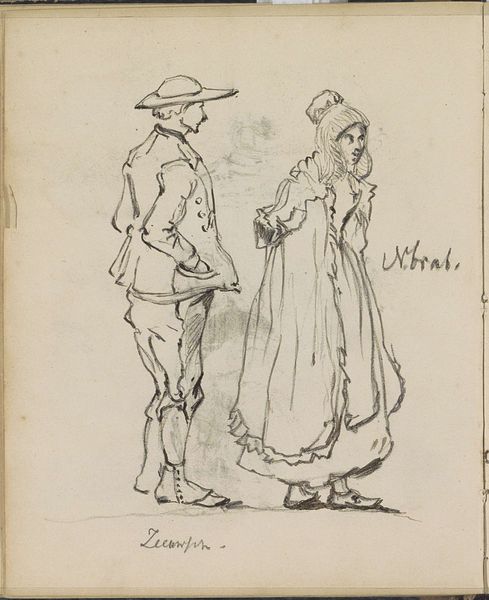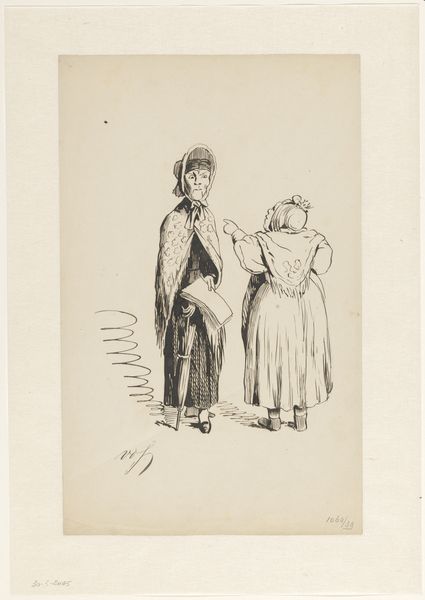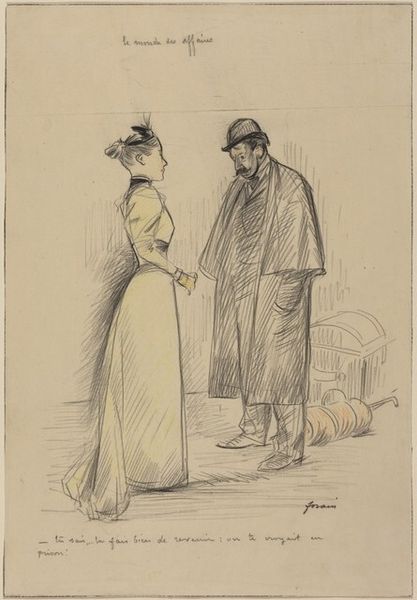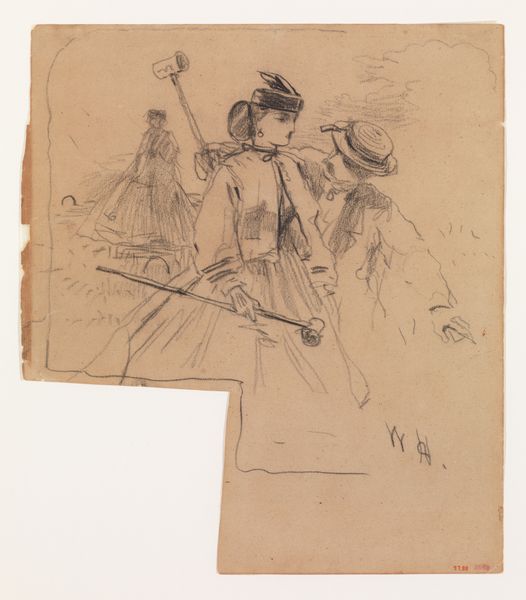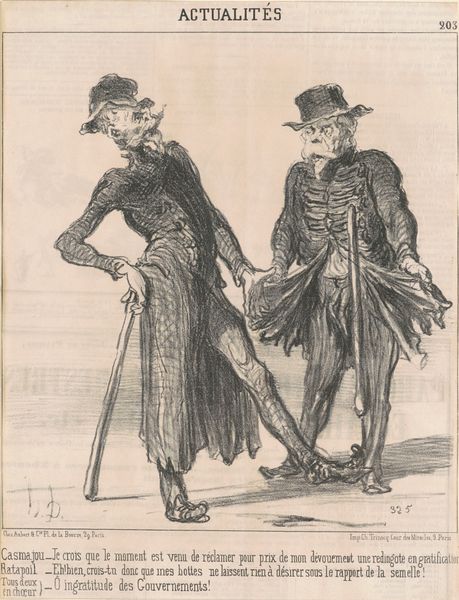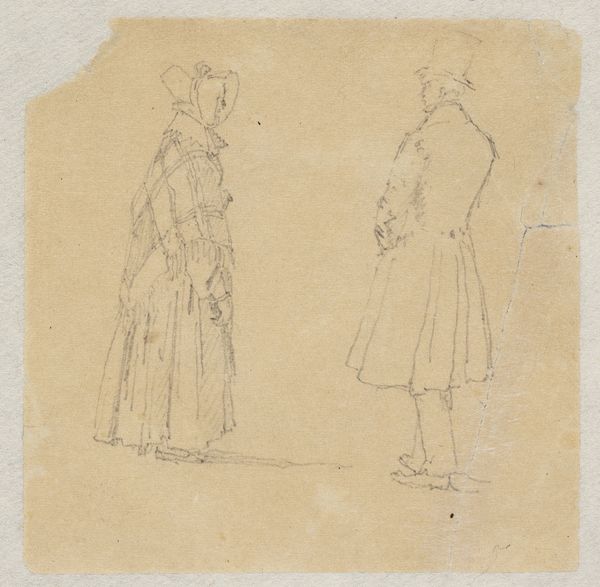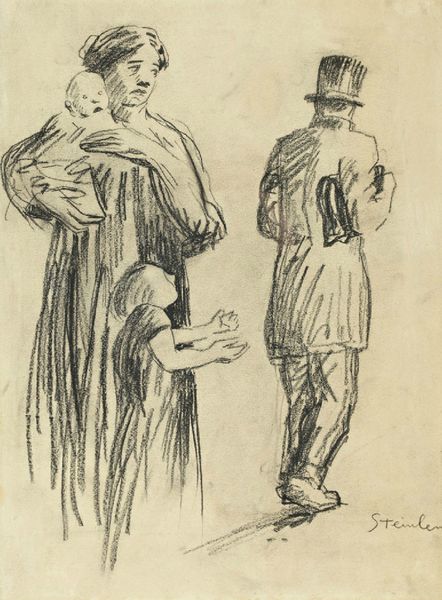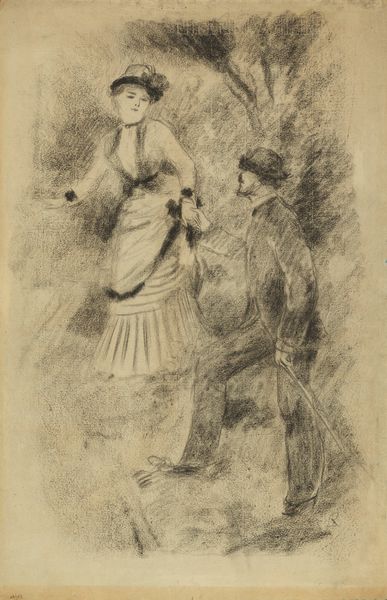
drawing
#
drawing
#
figuration
#
line
Dimensions: 149 mm (height) x 159 mm (width) (bladmaal)
Editor: Here we have Christian Kongstad Petersen's drawing, "To figurer," created in 1932. It feels…restrained, even stiff, like the figures are trapped within social expectations. I wonder, what is your take on this work? Curator: It's interesting you use the word "trapped." Looking at the drawing through a lens of social constraints, particularly of the 1930s, informs much of my view. This was a period wrestling with changing gender roles, the shadow of economic depression, and looming political instability. Editor: How do you see those tensions reflected in the drawing? Curator: Notice the detached body language, the averted gazes. While together, they don't seem connected. His cane, a symbol of bourgeois status, reads more like a barrier, or a weapon. What do you think the artist might be hinting at about the relationship between the figures, and perhaps, broader social dynamics? Editor: It's as if they're performing a role, conforming to an ideal rather than expressing genuine connection. Is Petersen critiquing societal expectations of the time? Curator: Precisely! It invites us to consider the performative nature of social interactions. It suggests a commentary on how individuals navigated the restrictive societal norms prevalent during that era, revealing a potential lack of authenticity and genuine connection. I wonder what kind of conversations these kinds of images can spark today? Editor: Looking at it this way, it's less about two people walking, and more about the invisible forces shaping their steps. Thanks, I hadn't considered that historical context so explicitly. Curator: Exactly, art offers this chance to open dialogues on gender, identity and societal pressure through a different lens.
Comments
No comments
Be the first to comment and join the conversation on the ultimate creative platform.
